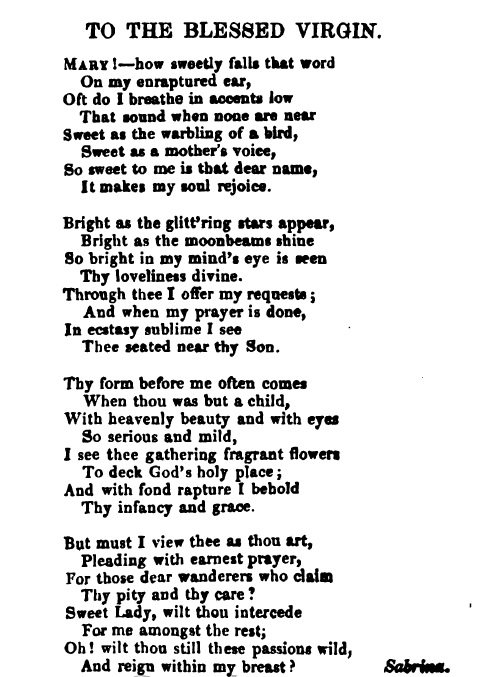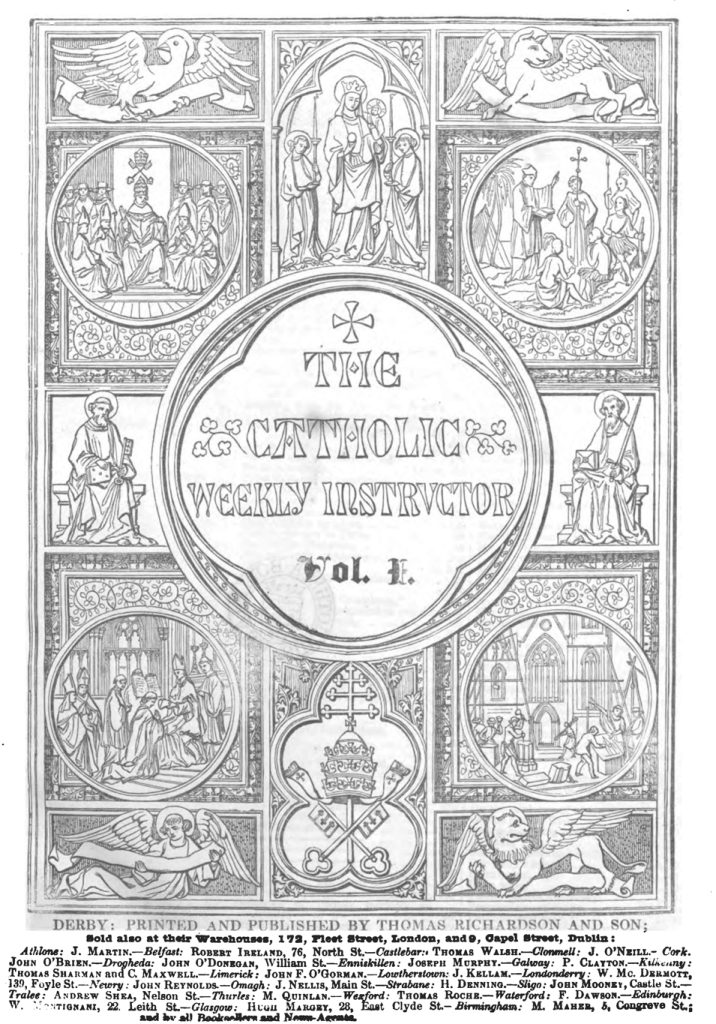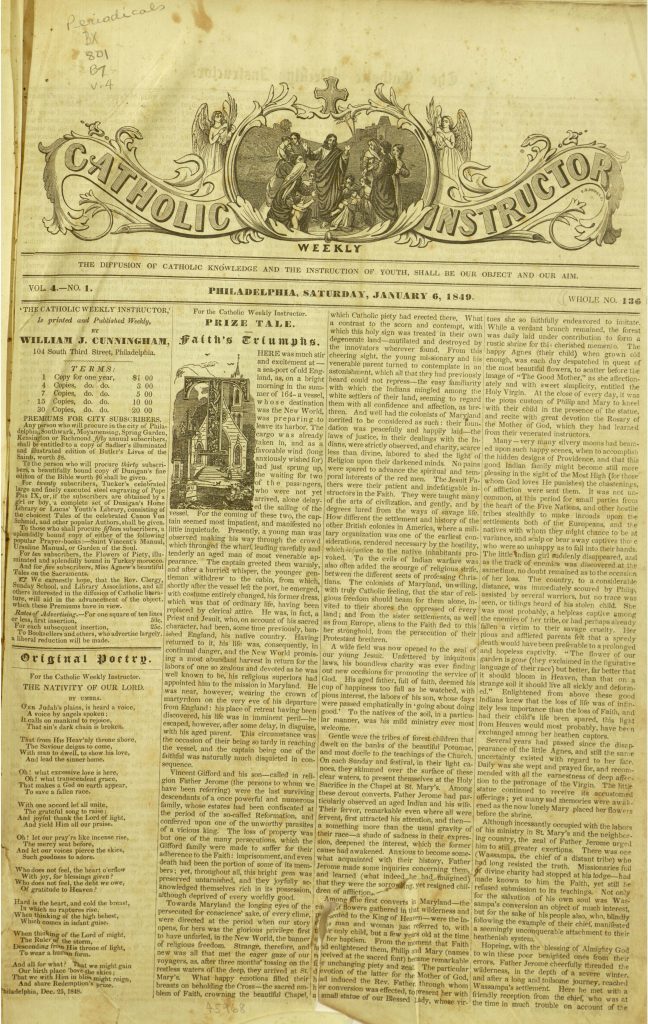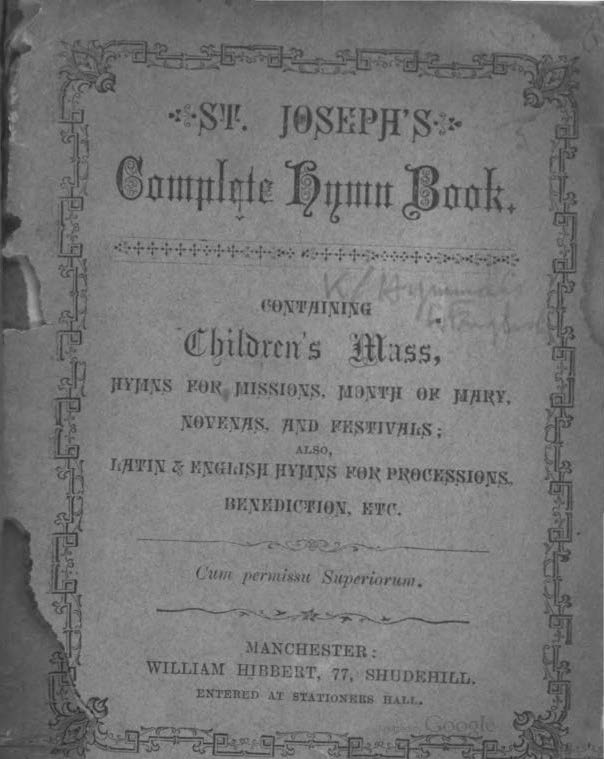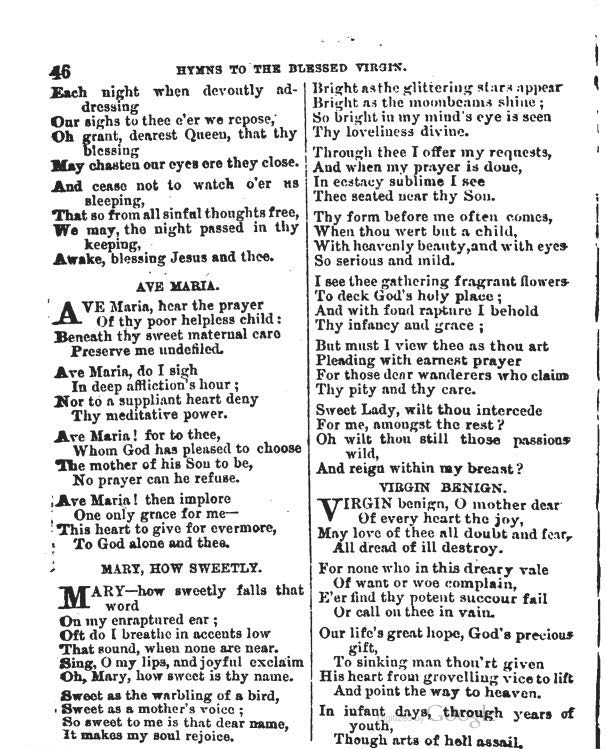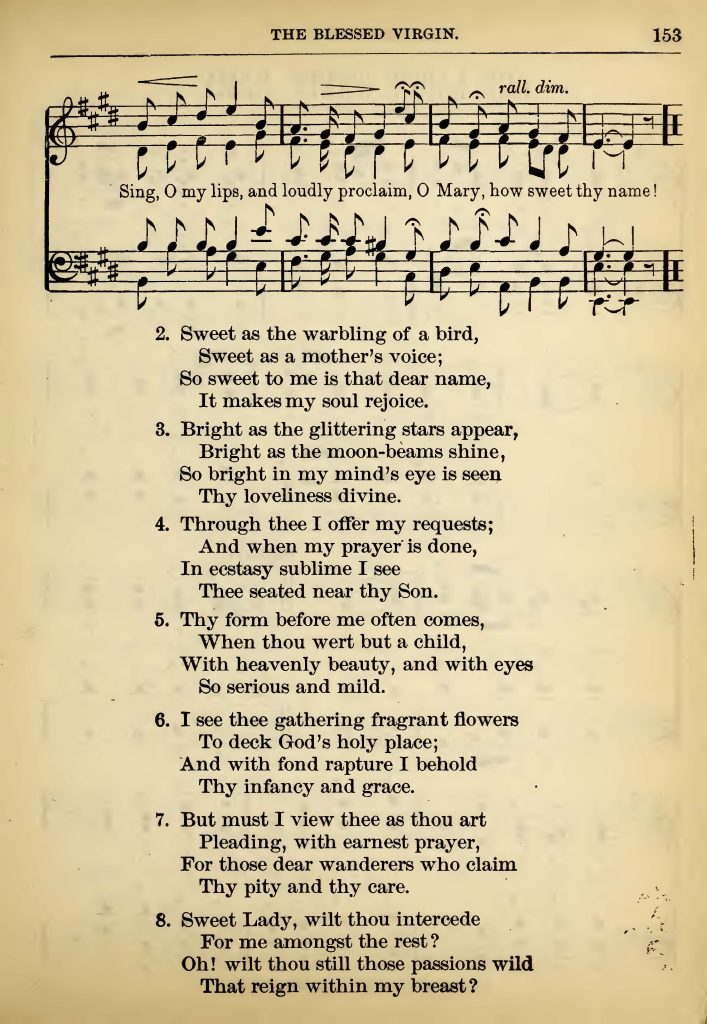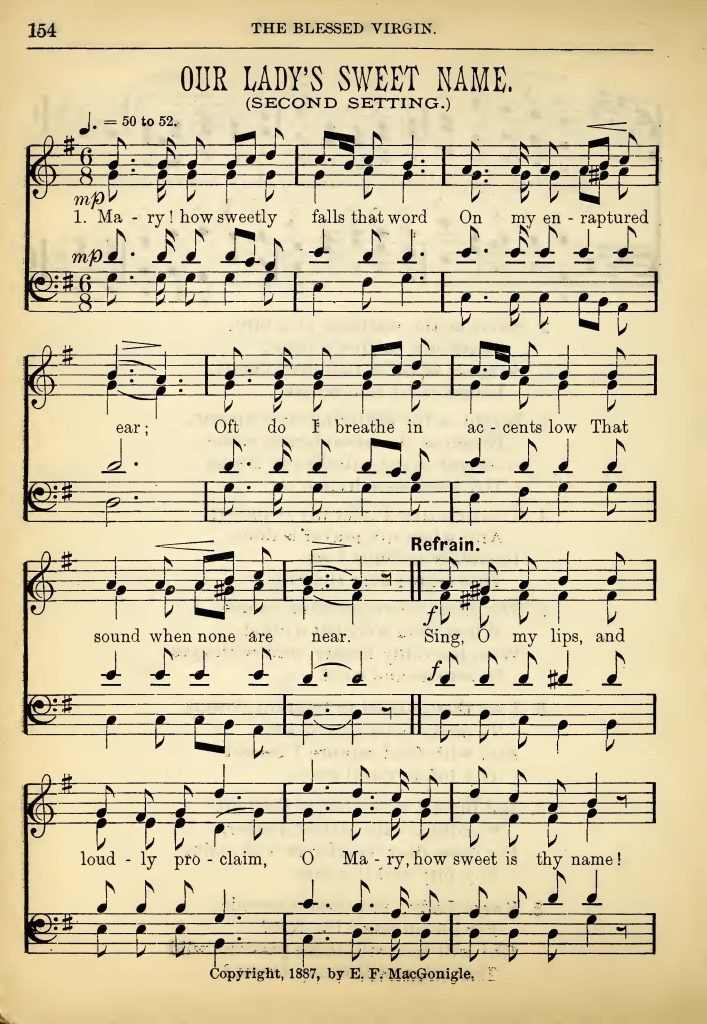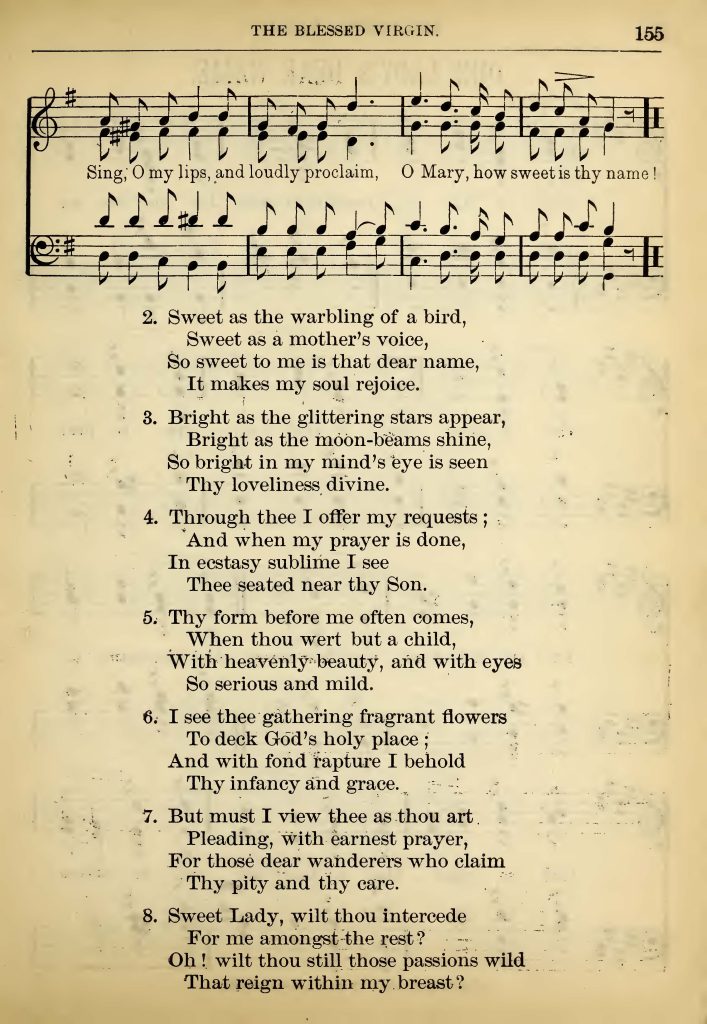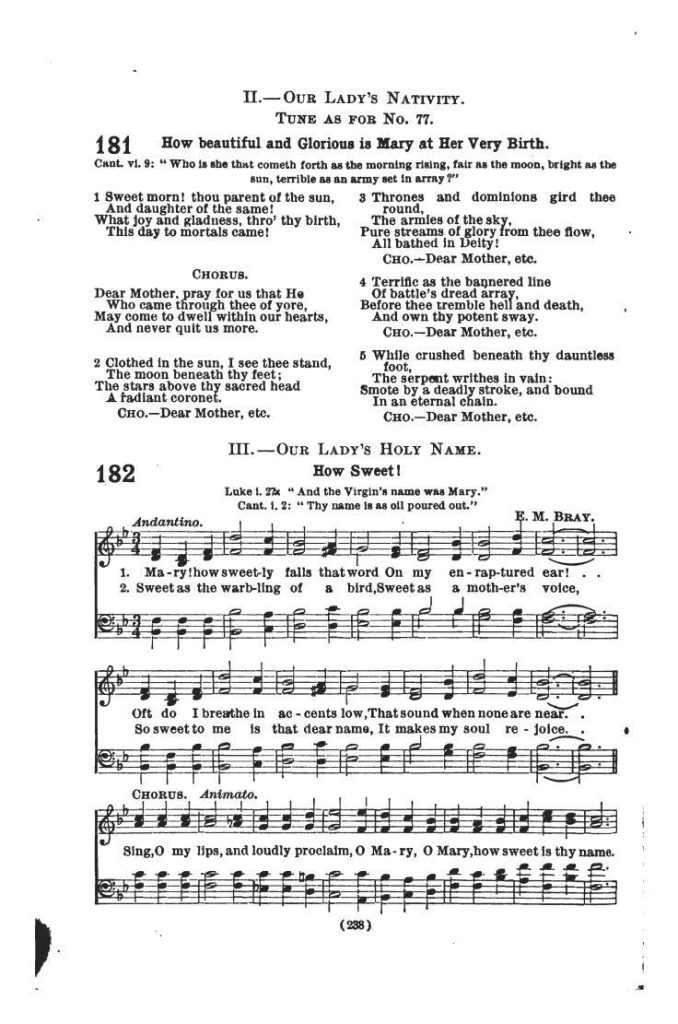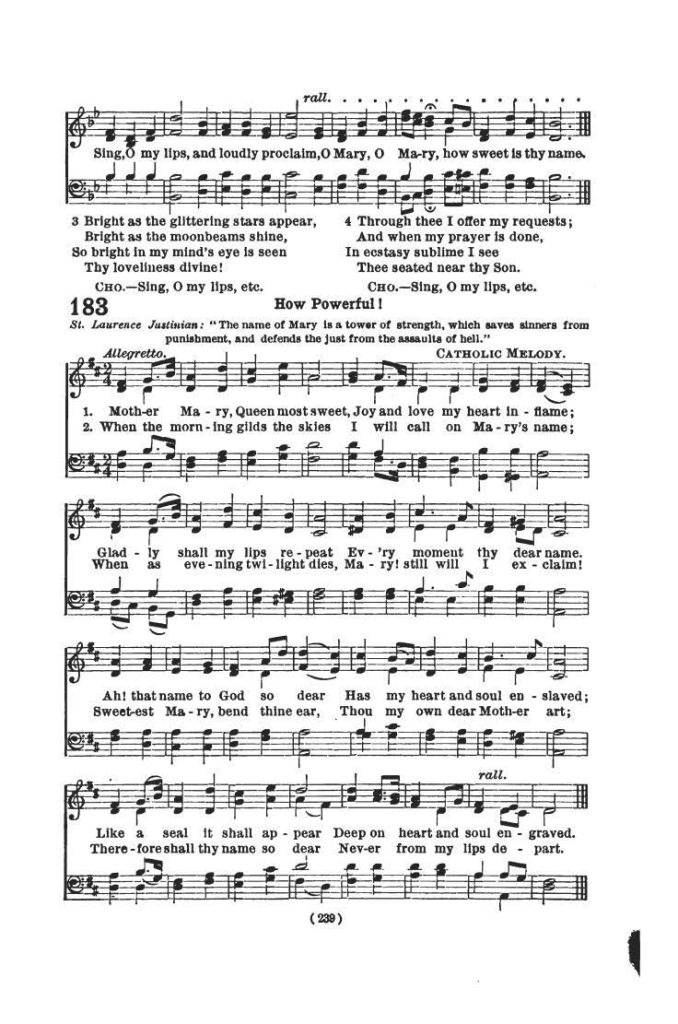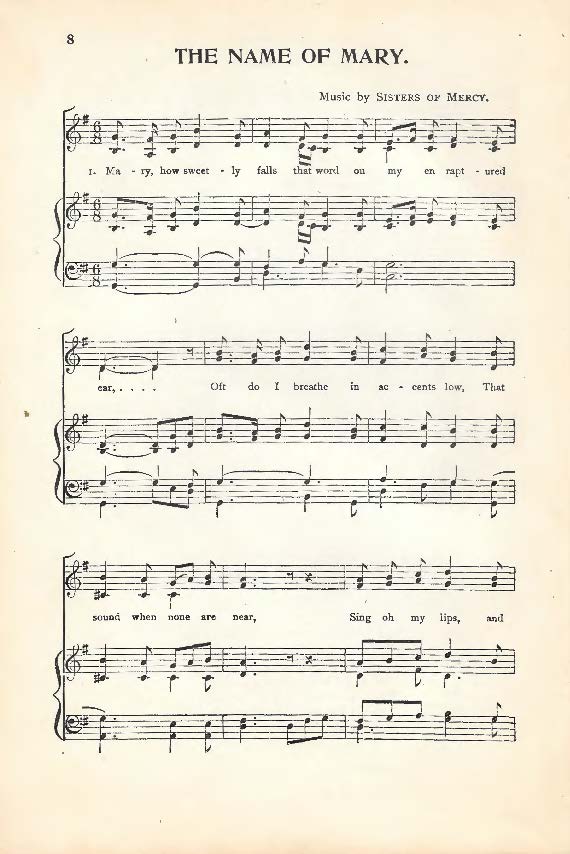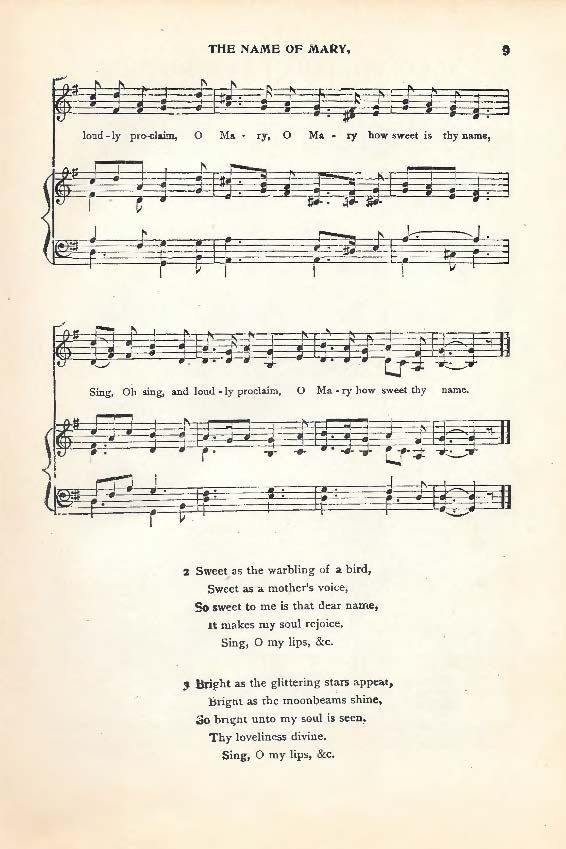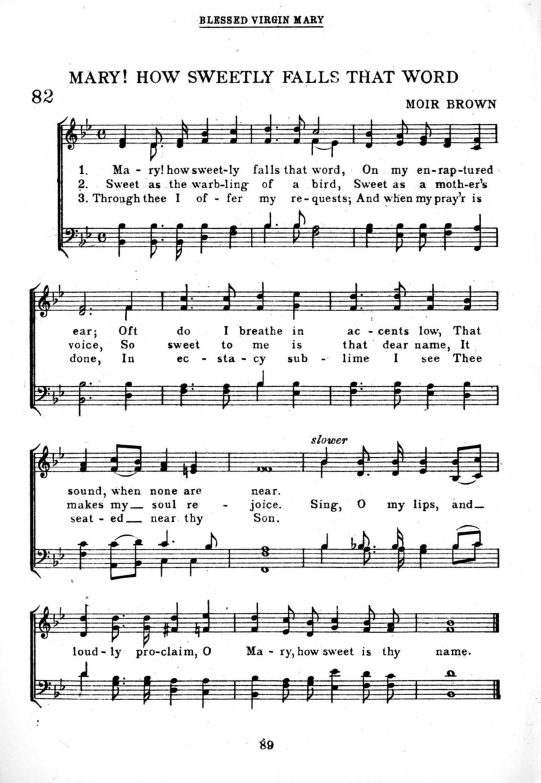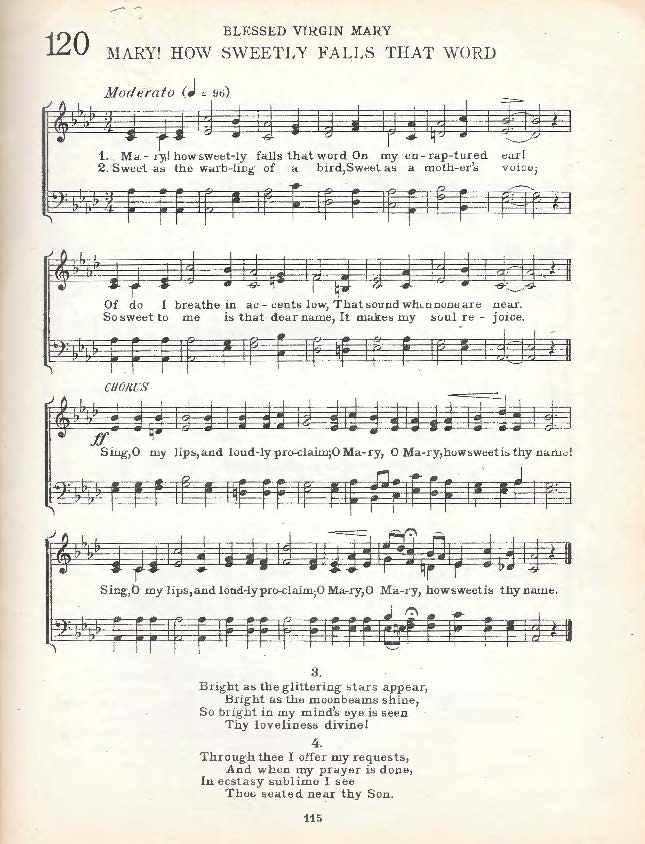The text of this hymn, one of the many that honor our Lady’s name, can be found in Volume 3, No. 4 – Saturday January 24, 1846, edition of the CATHOLIC WEEKLY INSTRUCTOR, a weekly magazine printed and published by Thomas Richardson and Son in Derby and sold from their warehouses located in London and Dublin and by numerous booksellers and news outlets throughout England, Ireland, and the United States.
The poem was captioned TO THE BLESSED VIRGIN, and the author’s name is given simply as Sabrina. Two other poems by this author include Boundless Wishes and To the Lilly of the Valley and can be found in the February and December editions from 1846.
The first issue of THE CATHOLIC WEEKLY INSTRUCTOR was published in Ireland in 1844. In the United States, the first issue was published in 1849 by William J. Cummings and ceased publication in 1851 according to the Library of Congress. Originally published as a Boys’ and Girls’ Catholic magazine, it became the newspaper THE CATHOLIC WEEKLY INSTRUCTOR. The newspaper was a collection of articles distinctly Catholic in their origin with interest in natural history or science, extracts from travelers’ books, pieces of poetry, and many tales of fiction.
The hymns earliest appearance is found in ST. JOSEPH’S COMPLETE HYMN BOOK, words only. A review of other hymns and hymn text in this collection suggest that this hymn book was printed around 1875, by William Hibbert of Manchester, England.
The chorus Sing, O my lips, and loudly proclaim, Oh, Mary, Oh Mary, how sweet is thy name appears to have been added at a later date because it is not part of the original poem. The origins of the chorus can be seen in ST. JOSEPH’S COMPLETE HYMN BOOK with Sing, O my lips, and joyful exclaim, Oh, Mary, how sweet is thy name.
The next appearance is found in the PAROCHIAL HYMN BOOK published in 1881. This hymn book was compiled and edited by Father Antoine Police, S.M., and was extremely popular in England, Ireland, and Scotland. It was succeeded by the PAROCHIAL HYMN BOOK, 1883, with a melody attributed to E. Bray.
Both of these hymn books were published in London. Father Police moved to Boston, and published the PAROCHIAL HYMN BOOK, 1897 sometimes referred to as the American edition. The composer of the melody is given as E. M. Bray, and this is the traditional melody.
Other hymnals include ST. BASIL’S HYMNAL from 1888 thru 1953 with the melody by E. M. Bray; the SODALIST’S HYMNAL, 1887 with two melodies each attributed to E. F. MacGonigle; OUR LADY OF MERCY HYMNAL, 1899 with a melody by Sister Mary Alexis Donnelly; the CROWN HYMNAL, 1913 with the melody by E. M. Bray; the NOTRE DAME HYMN TUNE BOOK, 1905 and the STANDARD CATHOLIC HYMNAL, 1921 with a melody composed by Moir Brown; SELECTED HYMNS, ca. 1925, references ST. BASIL’S HYMNAL for the melody; and ST. JOSEPH’S HYMNAL, 1930, with the melody by E. M. Bray.
Three other compositions are attributed to E. M. Bray and are listed in the PAROCHIAL HYMN BOOKs of 1883 and 1897:
- Blood is the price of Heaven, All sin that price exceeds.
- What Mortal Tongue Can Sing Thy Praise
- Saint Agnes, holy child, All purity
The last hymn Saint Agnes, holy child, All purity is also listed in the CROWN HYMNAL.
E. M. Bray was a musician living in London during the late 19th and early 20th centuries. There are at least two secular music scores, mazurkas, or Polish folk dances for pianoforte composed by E. M. Bray. One was published by Frederick Pitman & Co., in the 1870s, captioned Twilight Bells which was also still in print in the early 1900s. The other was Miranda published by the Messrs. White Brothers and listed in a newspaper article of the Glasgow Herald, Monday April 7, 1884, page 8.
Melodies
Below are the melodies by E. F. MacGonigle, E. M. Bray, Sister Mary Alexis Donnelly, and Moir Brown that are referenced above.
Reflection
I learned to sing this hymn when I sang in St. Mary’s Choir (1977-2010), and it is one of my favorite hymns to Our Lady. Oh, how I miss singing this hymn! The choir would sing this hymn before Mass or at the offertory on Sundays. At St. Mary’s we used the hymn arrangement from the St. Basil’s Hymnal featured below.
The second verse is a favorite of mine and the phrase Sweet as a mother’s voice. I can recall hearing my own mother’s voice when I was little and just starting kindergarten. I would be outside playing, and she would call from the back porch window, it’s time to get ready for school. It seemed to cut through the eddies of whatever I was doing.
What will it be like when we greet Our Lady in heaven and hear her sweet voice for the first time? What joy will fill our souls? So, while we still can, let us loudly proclaim, O Mary, how sweet is thy name!
The feast of the Holy Name of Mary dates to the 16th century and is celebrated on September 12th.
A special thank you to Peter Meggison producer of the Devotional Hymns Project for allowing me to link to recordings of this hymn by the Ensemble Cor et Vox at the magnificent St. John Cantius Church in Chicago featuring the melody by E. M. Bray, and the Church of the Advent, located in Boston’s Beacon Hill section featuring the melody by Sister Mary Alexis Donnelly.
I’ve also included the melodies by E. F. MacGonigle and Moir Brown. These are computer generated sound files. The tempo is approximate but should provide the listener with a good sense of what the hymn sounds like.

